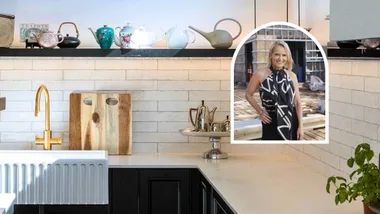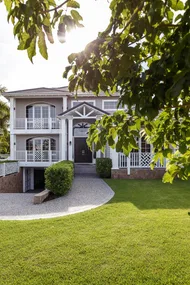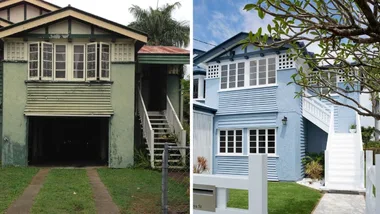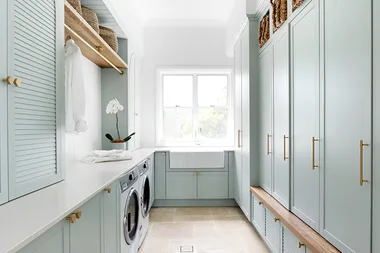To say that a house is ‘filled with character’ is one of the highest compliments you can pay a home, but when it comes to creating or preserving character, the devil is in the details. Whether you’re extending an existing home, renovating or building from scratch, one of the details you may be grappling with is the selection of skirting boards and ceiling mouldings.
Connect with trusted tradies. Receive instant quotes for your next job with hipages.

While it’s important to choose skirting boards and decorative mouldings that suit the period of the home, there are some instances where breaking the rules is totally acceptable. To provide a link to the old without attempting to create an exact match, seek out a complementary style, either in dimension or detail. Try going halfway – choose a modern square-set ceiling, but give a nod to the old with a skirting board in a similar style or profile.
Here, Home Beautiful reaches out to the experts, architect Thomas Favell of Favell Architects, interior designer Amanda Harris as well as interiors expert and host of Selling Houses Australia, Wendy Moore, for their tips on choosing the right skirting boards and decorative mouldings to boost your home’s style and character.

New build: Building from scratch? Choose the style of your home and plan mouldings and cornices from the outset.
Renovating: If you’re renovating, think about how you’re going to relate to the trims you already have in your home.
Restoration: In a restoration, custom design mouldings (Porta Timber has great options) can match the old with the new. Simply take a sample of your existing moulding, photograph the side profile and include key dimensions.
Extension: If you’re extending an existing home, you may wish to reveal the true story of what’s old and new, and celebrate the contrast. “Don’t be afraid to do something like put modern trims in a new extension, because the simple finishes of a modern aesthetic can balance the detail of the existing,” explains architect Tom Favell.
Where to start
How to choose the right skirting boards and mouldings for your home
To replicate or complement existing trims, find inspiration from the era of the home. It could be richly decorated Victorian mouldings or geometric cornices that speak of Art Deco.
If you are after contrast or starting with a blank canvas, stick to broad categories, to ensure longevity. Here are three broad ways to categorise the style of skirting boards and mouldings.

1. Contemporary
“Clean, simple details can be a feature itself,” says Tom. Most skirting boards have square edges, with the average sitting around the 62mm mark. Square-set ceilings allow for a more streamlined finish; fine lines are the key.

2. Traditional
Drawing inspiration from the Hamptons, French provincial and coastal-themed architecture, the ‘new classic’ style celebrates symmetry and scale. Trims are elegant and formal but simple.
“We wouldn’t go below a 140mmskirting board or a 90mm cornice – and always have a cornice,” says interior designer Amanda Harris.
Joinery is finished with mouldings – capping around the top and skirtings on the bottom – to create a ‘built-in furniture’ feel.
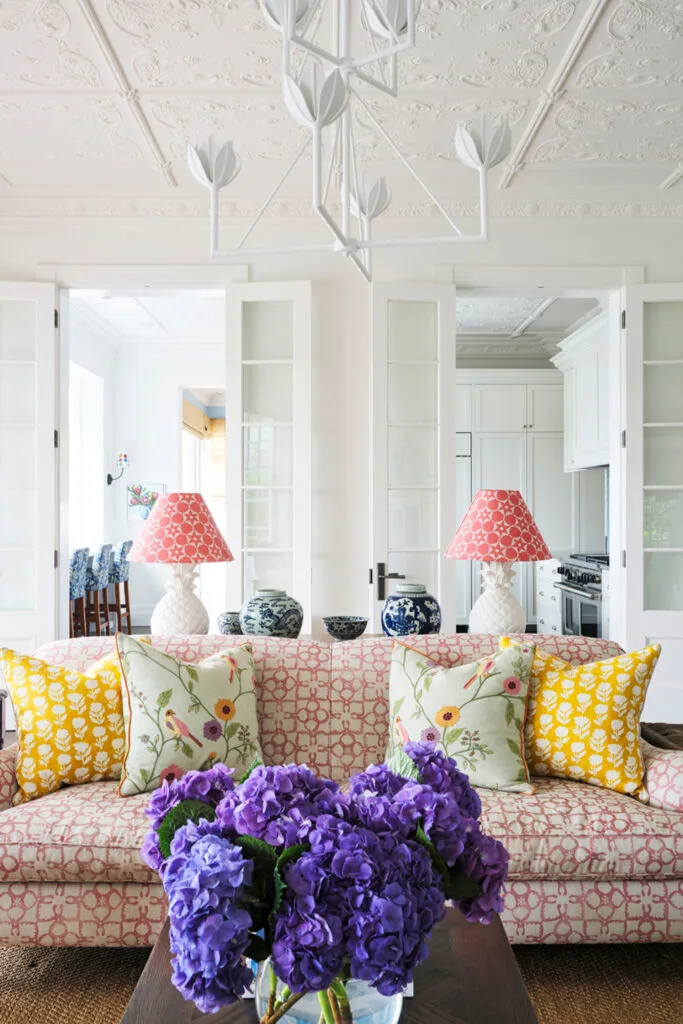
A restored Federation home with ornate ceilings and cornices. (Photography: Dave Wheeler | Styling: Corina Koch)
3. Art deco
With its bold geometric shapes and clean lines, Art Deco style came into its own in the 1920s, ’30s and ’40s and has proved eternally popular.
“Think triangles, diamonds and fans adorning cornicing and look-at-me hexagonal ceiling roses,” explains interiors expert Wendy Moore. Panelled timber doors are another stand-out feature of this look.

What size should skirting boards be?
In order to get your proportions right, look first to ceiling height and then to the feel you plan to create within the space. “It’s not a general rule that you have to go for smaller skirtings in a smaller space,” says Tom. “Larger skirtings will make it feel smaller, so if you want a cosy space you can play with the different effects. If you have high ceilings and you add small mouldings, it’s going to make it feel tall.”
The easiest way to gauge what will work for you is to try before you commit to buying for your whole space. Pick up some samples in different heights and widths, and place them around the room, fixing them temporarily in place with Blu Tack or double-sided tape. Leave them in place for a day or two and let your eye judge whether the mouldings feel skimpy or substantial.
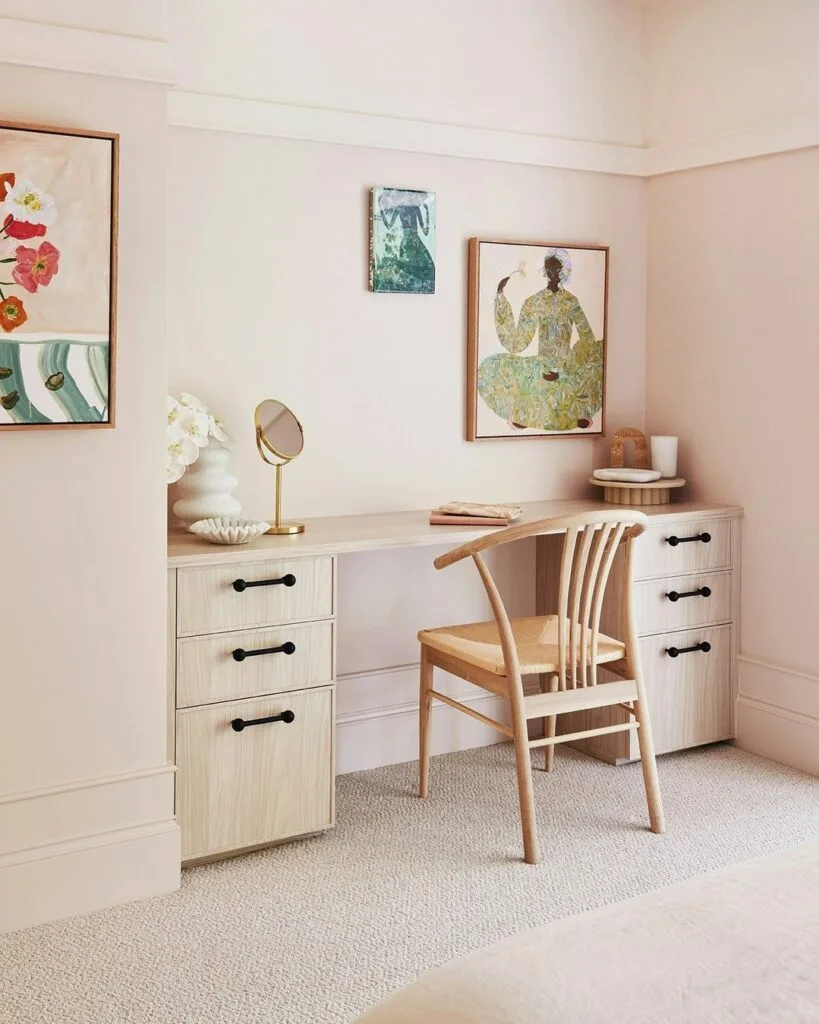
Selecting decorative wall mouldings
The trick to using timber boards as finishes, either vertically as VJs (vertical joins) or horizontally as shiplap cladding is balance.
“In an old Queenslander with VJ walls and timber floors there can be a lot of lines, vertically and horizontally,” says Tom. “It can be a lot to process. You need to focus on what to feature and what will just be breathing space.”
In the same vein, shiplap timber cladding works well to define areas, says interior designer Amanda Harris, who tends to reserve it for laundries, bathrooms, hallways, staircases and mudrooms.
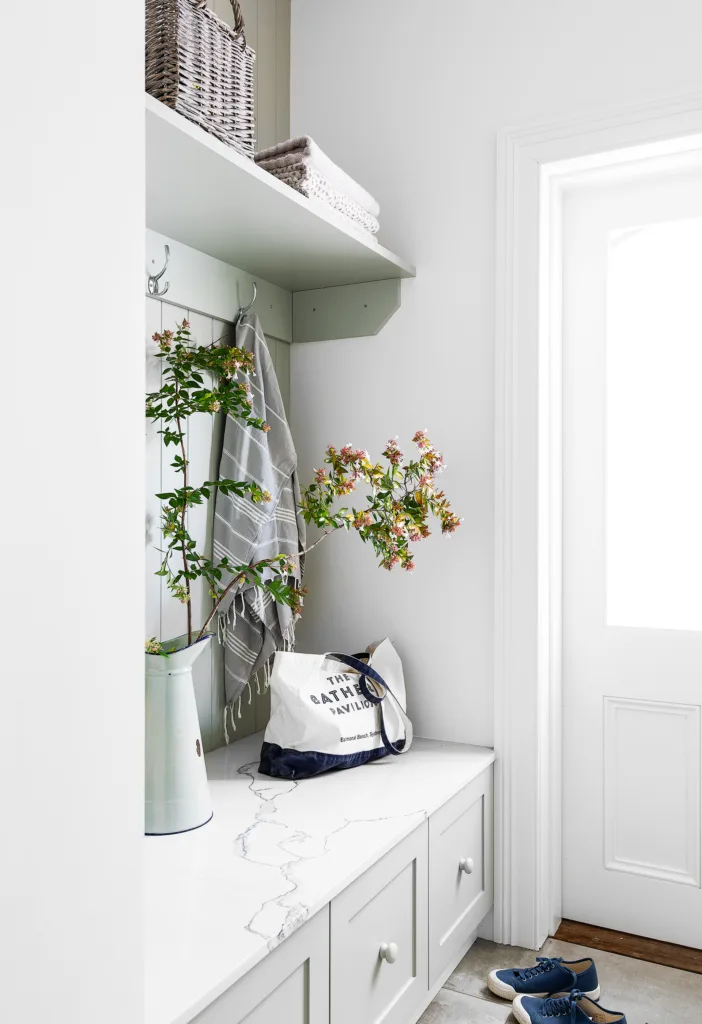
(Photography: Simon Whitbread)
Framing out a fireplace
A fireplace provides a central spot to showcase your style. Up the stakes, using the surround to showcase period detailing, classic profiles, inset mouldings or razor-sharp contemporary lines, often with an emphasis on materials.
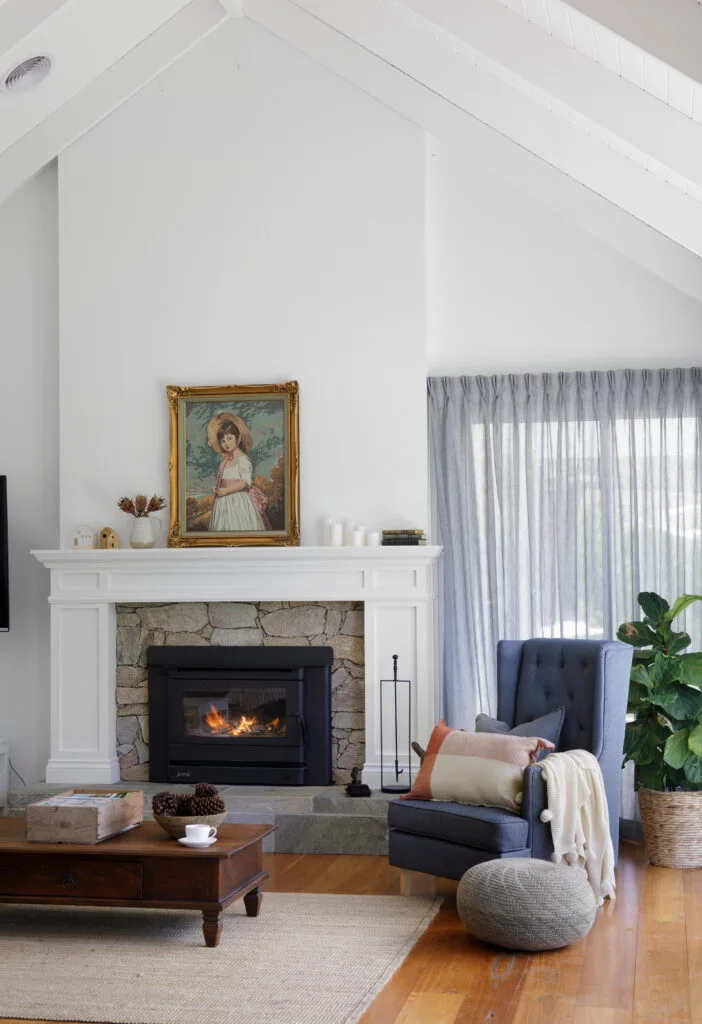
Ensure the surrounds read well with the proportion and detailing in your skirtings. In a new classical setting, Amanda suggests bookshelves on either side and above the mantel, and include more moulding detail to frame art or a picture light. “You can have the most boring room and make it interesting straight away,” she says.
Cornices: Usually plaster, the cornice sits where walls and ceilings join. They come in many different styles and sizes.
Mouldings: A shapely decorative architectural feature, often timber or plaster, in a cornice or doorway.
Shadow lines: A labour-intensive, but contemporary alternative to a cornice, leaving a streamlined gap where the ceiling meets the wall.
Skirting boards: Protective timber boards that run along the base of interior walls.
Square-set finishes: A square corner between wall and ceiling.
VJ panels and shiplap boards: Popular in Queensland, coastal and country homes, VJ (vertical joins) and shiplap (horizontal) timber lining boards for walls and ceilings create a heritage feel.
Glossary of terms
 Photography: Elise Scott / Styling: Bea + Co
Photography: Elise Scott / Styling: Bea + Co

